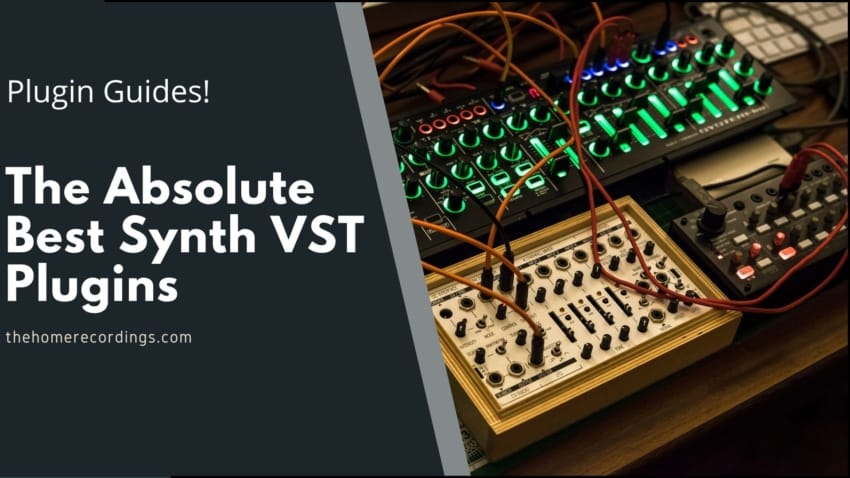Last updated on December 31st, 2023 at 08:05 pm
Finding great synth plugins can be a challenge, this is why I decided to create this list of the best synthesizer VST plugins that you can get. I will also be including a couple of free ones as well as a link to a huge list I made about freeware synthesizers.
If you’re interested in plugins in general, then check out this HUGE list I created with over 600 plugins, both free & paid.
In this article, I will be listing the best Synthesizer VSTs I could find, both free and paid, and I will also go over the differences between hardware and software synths, the different formats of plugin standards (VST, AU, etc.) and which one is best depending on your OS, and more.
Here’s a table with my favorite Synth VSTs:
| Synthesizer | What makes it good? | Format | Operating System | Price |
|---|---|---|---|---|
| Diva | Perfect middle ground between analog and digital synthesizers since it emulates 5 well-known analog synths | VST2, VST3, AU2 32/64-bit | Windows, Mac OS | $179 |
| FM8 | FM synthesis much more advanced than classic hardware. | Stand-alone, VST, AU, AAX, 64-bit only. | Windows, Mac OS | $160 |
| Spire | Quite simple to use and offers 4x multimode polymorphing oscillators, 9x unison voices on each oscillator, and more. | VST, AAX, AU, 32/64-bit. | Windows, Mac OS | $129 |
| Hive 2 | Includes 2 Wavetables with multiple waveforms. Includes”.uhm” files containing scripts written in a proprietary wavetable generation and manipulation language let you write your own scripts. | AU2, VST2, VST3, 32/64-bit. | Windows, Mac, Linux | $149 |
| Massive | Excels at low-end bass synthesis. | Stand-alone, VST, VST3, AU, AAX, 64-bit only. | Windows, Mac OS | $160 |
| Serum | Wavetable synthesizer that features over 450 presets, plus you can get thousands more which were created by users & the community. | VST, AU, AAX 64bit. | Windows, Mac OS | $189 |
| Circle 2 | Everything you need is in the main window (no menu diving required), and the UI is quite intuitive although all the info is there. | VST, VST3, AU, AAX, 32/64-bit. | Windows, Mac OS | $129 |
| SEM V | Has all the original parameters of the Oberheim SEM : two oscillators, each offering sawtooth wave and variable-width pulse wave with PWM, sine wave LFO, 12dB/oct multi-mode Filter with low-pass, high-pass, band-pass and notch, two ADS envelope generators, and some added functionality as well. | Standalone, VST 2.4, VST 3, AAX, AU, NKS, 64-bit only. | Windows, Mac OS | $149 |
| VPS Avenger | Up to 8 oscillator, arpeggiator, Step Sequencer, and Mod Envelope modules, and up to 4 LFO, Shaper, & Filter Modules (And a lot more). | VST, VST3, AU, AAX, 64-bit only. | Windows, Mac OS | $220 |
| Reaktor 6 | Allows you to build custom synths, samplers, effects and more, and it has a rack-style modular patching system. | VST, AU, AAX 64bit only. | Windows, Mac OS | $199 |
So, let’s kick things by comparing hardware and software synths:
Hardware Synths vs VSTs; What’s the difference?
The vast majority of synthesizers have filters and ADSR envelopes, where filters control the frequencies you hear in a sound, and the ADSR envelopes control when you hear them.
There are different types of synth VSTs and the way they produce sound is different:
- Virtual Analog: Commonly referred to as subtractive synthesis, the synth VST is a digital translation of a hardware synthesizer. This generally means that sound is produced by oscillators with a set waveform, like saw, triangle, pulse, etc., and passed along to the filter, envelopes, and other FX. s.
- Wavetable: Wavetable synths have a higher variety of waveforms you can use to produce sounds and a wavetable stores many individual waveforms allowing the synthesizer to cycle through them, producing an evolving sound over a period of time.
- Sample/Loop-Based: More often referred to as romplers, these types of Synth VSTs use samples as their sound source (they don’t create sound out of thin air like the other synthesizers do, but let you shape already existing audio).
As far as the actual comparison between Hardware synthesizers and VSTs go, many will argue that the sound of a hardware synthesizer will always be superior, as with valve vs. solid state amps. The discrepancy in sound is often most apparent with analog synths since the waveforms, by nature, are a different shape, resulting in an objective sound difference.
However, that doesn’t necessarily mean that VST synths sound bad or even worse than Hardware synths, they are just slightly different.
Where they really do differ, is price: A VST synth is generally affordable, even free at times, whereas hardware synthesizers are much more expensive.
VST or AU, which one is right for you?
There are a variety of plugin standards out there, so before you buy any of the plugins on this list, you need to make sure that your DAW is compatible with it.
On the PC, VST (Virtual Studio Technology) is by far the most popular and supported by pretty much all the DAWs. Apple also has its own standard called AU (Audio Units), although you can get Mac VSTs too, but AU is the most common format for Mac computers.
Note: Not all synths will work on all hardware. For example, the M1 Macs support fewer plugins that most other computers out there, although they are receiving loads of updates, which means that this issue should be fixed soon.
Standards such as AAX and RTAS are also available, both of which are specific to Avid’s Pro Tools software.
Now, without any further ado, let’s get into the actual plugin list!
Diva by U-He ($179)
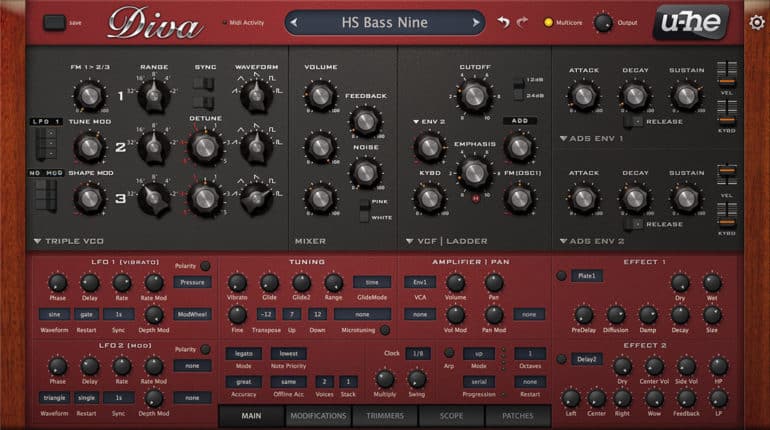
Diva is a synth that captures the spirit of various analog synthesizers (Moog Minimoog, Roland Jupiter 6/8, Roland Juno 60, Korg MS-20, and a digital combination of the Roland JP-8000 and Oberheim SEM) by letting the user select from a variety of alternative modules.
The oscillators, filters, and envelopes closely model components found in some of the greatest monophonic and polyphonic synthesizers and you can swap between the different oscillator and filter banks of each of the 5 emulations (mentioned above), giving you a total of 25 combinations.
Diva is pretty easy to use despite the Interface looking a bit complex, with the only downside being that it’s quite CPU intensive.
However, this is worth it since it sounds absolutely fantastic!
The reason I included it on this list is that it’s the perfect middle ground between analog and digital synthesizers since it emulates 5 well-known analog synths, with some added flexibility.
You can find out more about Diva by U-He here.
Are you looking for a new DAW? Here’s a list of the best DAWs currently available!
FM8 by Native Instruments ($160)
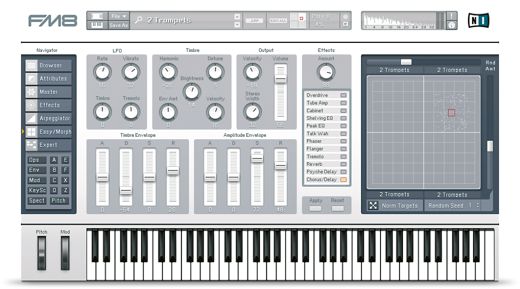
Native Instruments is known for creating excellent plugins like Electric Guitar Amp Simulators, however one of their most iconic plugins must be the FM8.
The FM8 soft synth uses frequency modulation synthesis, just like the Yamaha DX-7 which was responsible for the iconic sound of the 80s.
This isn’t a plugin that I would recommend to the absolute beginner since it’s not the easiest to use, but if you have the time and the patience you should be able to get some interesting sounds out of it!
This synth was even used by Skrillex, which is a clear testament to its quality.
You can find out more about Native Instrument’s FM8 here.
Note: FM8 can be bought on its own or as part of the Komplete 12 Bundles.
These bundles are far more expensive than the single FM8 plugin, but you get loads of high-quality instruments when purchasing one of them.
Spire by Reveal Sound ($129)
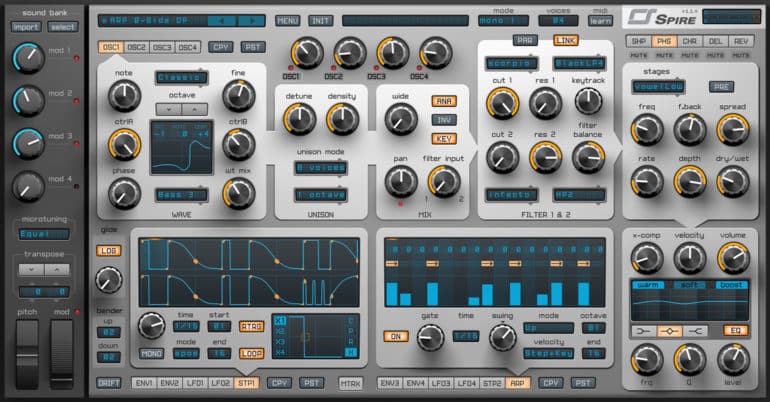
Used by famous artist Armin Van Buuren, Spire is a simple yet great sounding hybrid synth that covers everything from analog to Hard FM.
It comes with loads of presets as well as all the onboard mixing tools you could ever need.
Spire may be mostly geared towards trance and other electronic music; however, it is also very capable of creating more unusual sounds which you didn’t think were possible for the typical virtual analogue synth.
You can find out more about Spire by Reveal Sound here.
Hive 2 by U-he ($149)
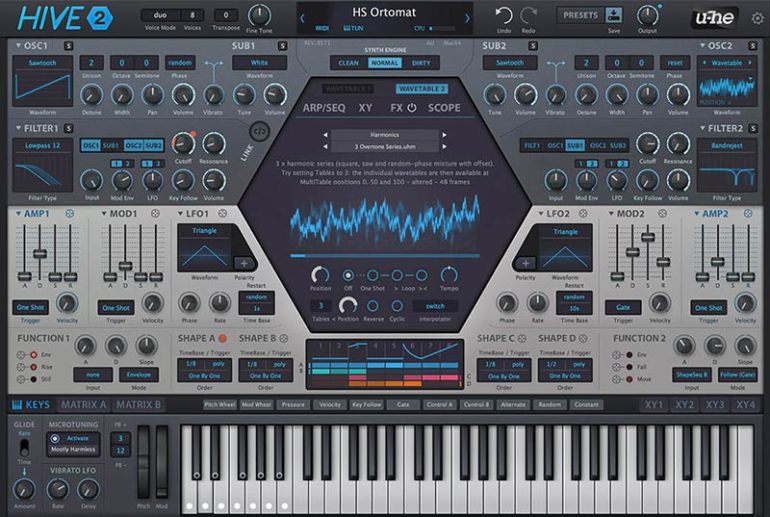
Hive 2 is quick and uncomplicated, without sacrificing flexibility or audio quality.
It is a lightweight multipurpose synth with tons of functionality that is also super easy to use, which means that you’ll be creating great sounding patches in no time.
You can add movement and life using the shape sequencer, or instantly record, rotate and arpeggiate note sequences.
The 12-slot matrix even lets you modulate effect parameters, encouraging you to explore a whole new world of creative options.
Hive 2 includes Wavetables which appear as multiple waveforms, and are controlled in the central hexagon.
You can manually select wavetables, modulate the wave position via the matrix, or even scan through them automatically using the envelope and loop options.
You can find out more about Hive 2 by U-he here.
Massive by Native Instruments ($160)

Native Instruments is one of the best plugin companies out there, and Massive is no exception to this rule. In fact, I find myself recommending it a lot lately!
It has been around since the early days of soft synths and is one of the people’s favorites.
Massive was designed to create basses and make them as Massive as possible.
The interface is fairly clean, easy and intuitive to use, at least when compared to other synths, which means that if you’re completely new to the world of synthesizers, this one might be a good choice.
Massive is one of the go-to synths for bass music as well as electronic music.
You can find out more about Massive by Native Instruments here.
Important note: Native Instruments came out with Massive X recently.
Massive X is a completely rethought and rewired version of Massive which you should also consider.
Serum by Xfer Records ($189)
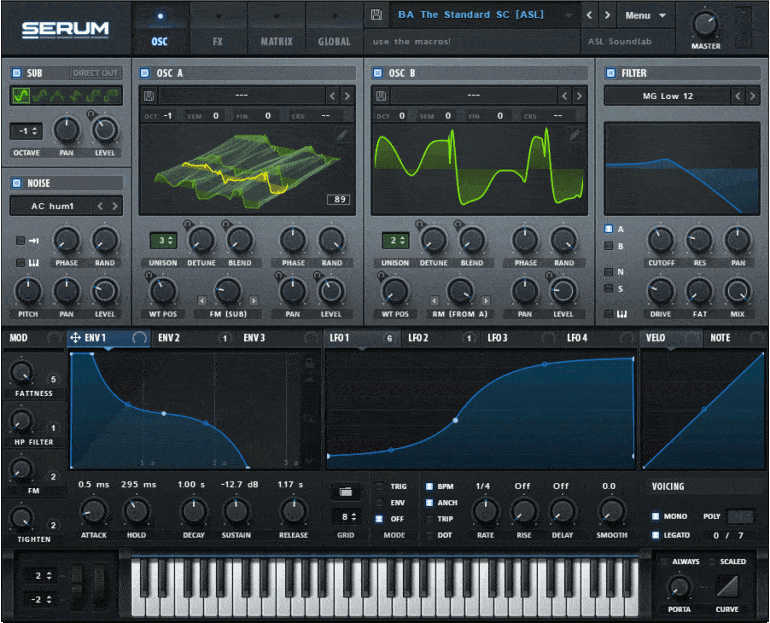
Serum is one of the most famous soft synths out there; It is a Wavetable synthesizer and it has virtually no processing limitations, which makes it incredibly powerful.
It can load up sounds and transform them into wavetables, plus it’s super easy to use since the UI is very easy to understand and navigate.
Serum also features 10 effects, drag and drop routing, and loads of presets.
You can find out more about Serum by Xfer Records here.
Circle2 by Future Audio Workshop ($129)
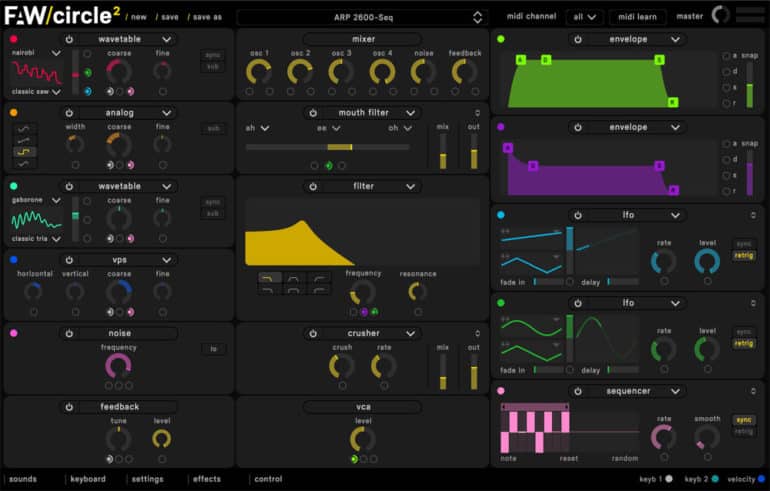
Circle2 is a wavetable synthesizer that focuses on a streamlined workflow and creativity, and which has been consistently used by artists such as David Guetta and Deadmau5.
One cool thing about Circle2 is that everything you need is in the main window.
This means that you don’t have to go “menu diving” in order to get to the settings you need.
The UI is super intuitive since it allows you to drag and drop anything you need.
Not only does Circle2 feature 110 wavetables, loads of effects and over 300 sounds, but it also offers a step sequencer, Native Instruments NKS Support, an arpeggiator, and a lot more.
You can find out more about Circle2 by Future Audio Workshop here.
SEM V by Arturia (SEM V)
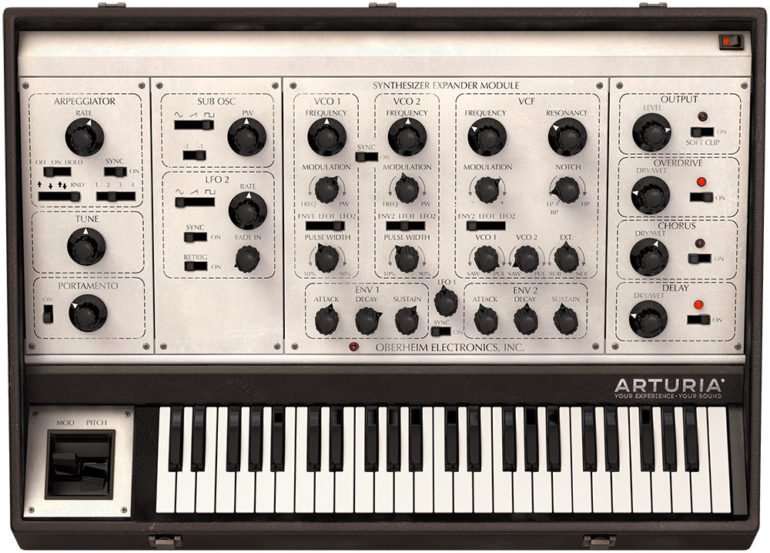
The Arturia SEM V is an emulation of the classic Oberheim SEM.
The SEM module was originally made to compliment other synthesizers but later came into its own as a great sounding synth.
At the time the unique filter that allowed continuously variable operation from low pass to high pass gave it a sound that no other had.
SEM V delivers all the deep analog sounds that made its ancestor so unique and praised by recreating the tone, waveshapes, and other detailed characteristics.
If you want to be able to have some of that analog goodness for your music, then give SEM V a shot.
You can find out more about SEM V by Arturia here.
VPS Avenger by Vengeance Sound ($220)
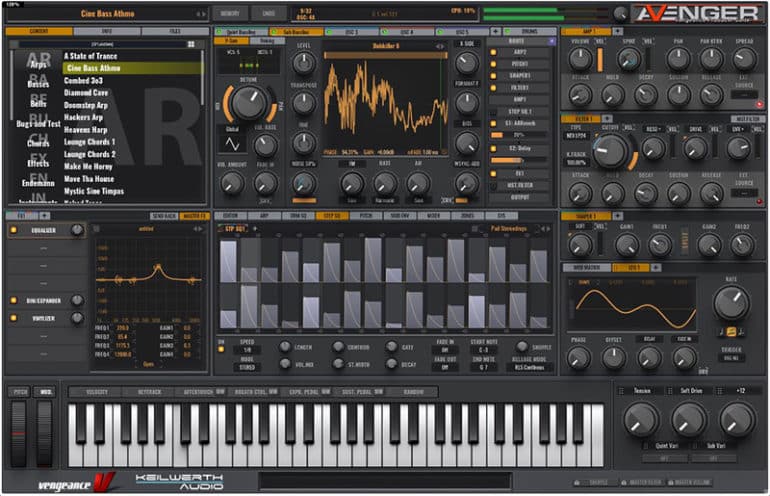
Avenger is a very powerful synth that unites analog, wavetable, and sample-based synthesis.
It comes with over 1000 presets, loads of effects and filter types, and more…
Not only is it a powerful synthesizer but it also features an onboard drum sequencer, arpeggiator, step sequencer, chord detection module, and a lot more, and you can import and convert ANY 1 cycle waveform sample into an Oscillator shape.
Once the waveform is imported, you can transform it in every direction possible.
You can freely draw your own OSC shapes – use a pencil or draw lines, use smoothening parameters or normalize, fade in/outs to help create every shape imaginable.
In regards to the drum kits, Avenger comes with more than 160 Drum-Kits from all possible genres, while each drum-kit holds 12x perfectly mixed and matched drum samples.
You can find out more about Avenger by Vengeance Sound here.
Native Instruments Reaktor 6 ($199)
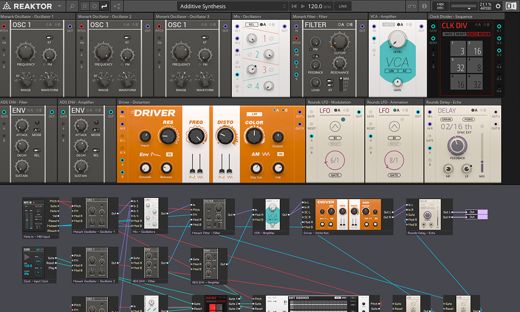
If you like building patches from scratch, then Reaktor 6 is definitely for you.
Its previous version, Reaktor 5, is one of the few pieces of software that could survive for up to ten years without receiving any updates and still be relevant, which is impressive.
Reaktor 6 also provides a platform for modular synthesis in the form of Blocks – a range of sound generating and sound shaping modules.
You can patch them together to create new and unique modular synthesizers, effects chains, complex sequencers, and more.
With its various oscillators and filters, which sound fantastic, as well as its analog-style sounds, Reaktor 6 is one of the best Synthesizers you could ever get.
The only cons I can think of with this plugin is that it can seem a little complicated to use at first, and it’s a bit CPU intensive as well…
You can find out more about Reaktor 6 by Native Instruments here.
Synthmaster One by KV331 Audio ($79)
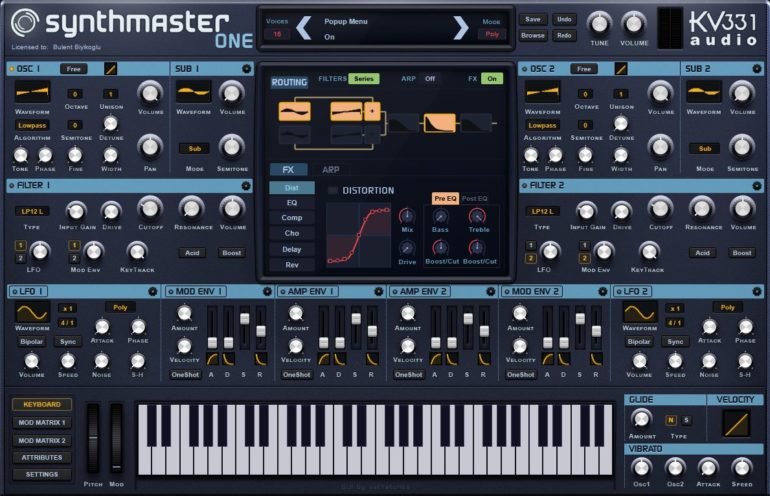
SynthMaster One is an easy to use wavetable synthesizer with an intuitive workflow.
Although it shares the same engine with its bigger brother SynthMaster, it comes with new features like wavetable synthesis.
With its simple layout, rich wavetable/waveform content and inspiring factory presets library, designing new sounds with SynthMaster One is extremely easy to do.
This is one of the most affordable plugins on this whole list, plus it’s so easy to use that anyone, even without prior experience, can use it!
This is why I’d absolutely recommend it to all the beginners out there.
Not only that, but if you like it and you want some added functionality, you can purchase upgrade bundles.
You can find out more about Synthmaster One by KV331 Audio here.
Pigments by Arturia ($199)
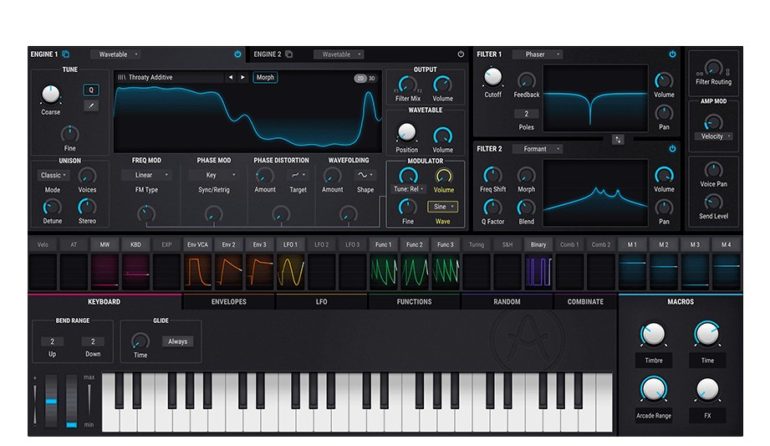
Pigments is an immensely powerful wavetable and virtual analog software synthesizer.
It features a twin audio engine, letting you mix virtual analog and wavetable oscillators to create the perfect starting point for your patch.
You can even morph wavetables, or import your own.
Experiment with 3 envelopes, 3 LFOs, and 3 function generators…
Process your patch with contemporary effects like wavefolder and multifilter, or vintage studio reverbs, delays, and EQs.
If you can imagine a sound, Pigments can probably create it!
Find out more about Pigments by Arturia here.
Repro-1 by U-he ($149)
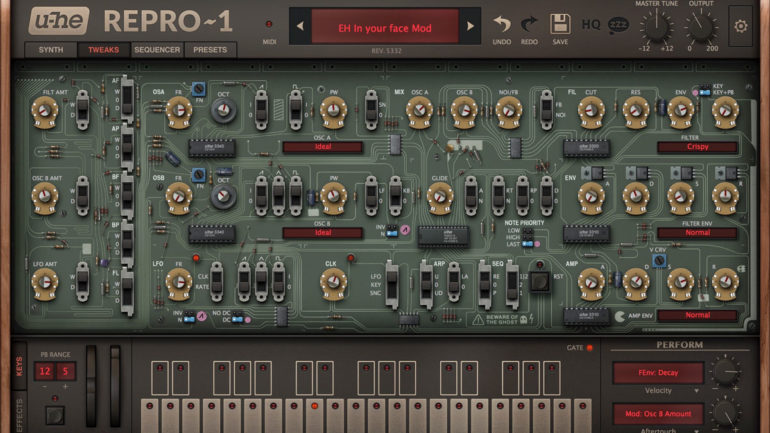
Repro-1 would be the lightweight counterpart of U-he’s famous plugin “Diva”, which is the first one of this list.
When you download Repro you not only get Repro-1 but also Repro-5.
Repro-1 is a monosynth: Two oscillators, self-oscillating 4-pole lowpass filter, arpeggiator, step sequencer, the unique modulation section, and five stomp-box effects which can be arranged in any order.
Repro-5 shares a lot of sonic DNA with Repro-1, but adds new flavors and characteristics.
First of all, it’s Polyphonic: Play rich pads, shape them using the resonant lowpass filter, drive the polyphonic distortion unit as hard as you like, and finally polish your sound with five built-in effects.
Repro-5 adds new dimensions to the familiar classic sound while keeping analogue authenticity.
You can find out more about Repro-1 by U-he here.
Absynth 5 by Native Instruments ($160)
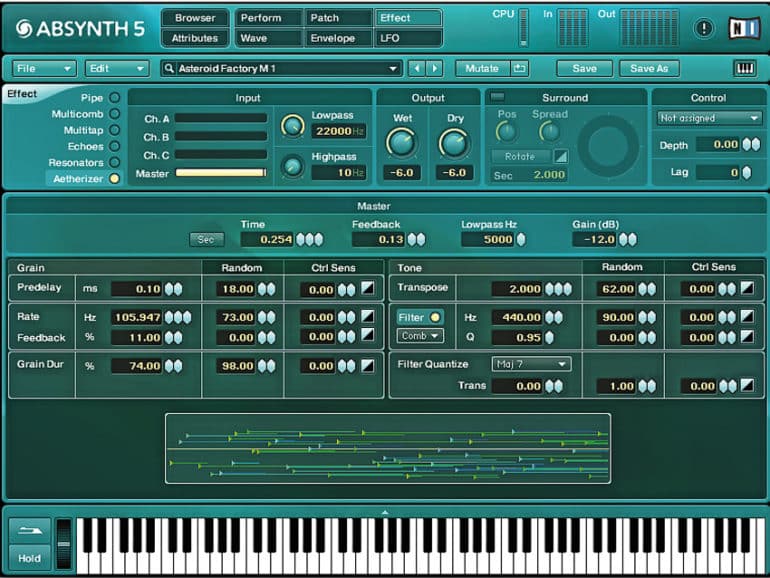
Absynth 5 is one of those synthesizers that has earned the reputation of being one of the go-to choices for any serious music producer.
It’s one of the most powerful synths out there, with the only issue being how difficult it is to use since the interface doesn’t really allow you to navigate it easily.
Having said that, if you know your way around synthesizers or if you don’t mind investing some time into it, then Absynth 5 is an absolute must.
You can find out more about Absynth 5 by Native Instruments here.
Harmor by Image-Line ($119)

Harmor, which was developed by the same people who created FL Studio, is driven by a powerful additive synthesis engine.
Its modules will look familiar to subtractive synthesizer enthusiasts: oscillators, filters & phasers, these are featured in Harmor but, because performed through additive synthesis, offer more freedom.
Just like with the previous synth on this list, Harmor can seem a bit intimidating on first sight.
However, what it lacks in ease-of-use it more than makes up in overall quality of the sounds.
You can find out more about Harmor by Image-Line here.
Free alternatives
I wrote another post where I listed the free synth plugins that I considered to be the best ones, here are three of those;
Dexed by Digital Sub Urban (Windows, Mac)

Dexed is a Free multi platform and multi format frequency modulation Synth which is based on, or closely modeled to, the Yamaha DX7.
It isn’t the simplest synth to use… there is definitely a learning curve to it, but I honestly think that it’s well worth it to do the effort and learn it properly.
It is also a MIDI cartridge manager for the DX7 meaning that any of the .syx files in the cartridges will be available from the “Cart” window.
You can access this directory by pressing the “Cart” button and then the “Show Dir” button.
You can find out more about Dexed by Digital Sub Urban here.
Surge by Vember Audio (Windows, Mac, Linux)

Surge is an opensource Synth VST that sounds fantastic and is considered by many to be the best free synthesizer plugin currently available.
It is a hybrid subtractive synthesizer with a dual synthesis engine.
Each patch contain two ‘scenes’, which are separate instances of the entire synthesis engine that can be used for layering or split patches.
In addition to this, it also features three oscillators per voice, 8 oscillator algorithms, Two filter units in 8 different configurations, 12 LFO units available0 (6 are per voice and 6 are global for the whole scene), 7 deformable LFO waveforms plus a drawable/step sequencer waveform, and more.
As far as effects go, it features Delay, Reverb, Chorus, Phaser, EQ, Distortion, Conditioner (EQ, stereo-image control, and limiter), Rotary speaker, Frequency shifter and Vocoder.
Surge used to be a premium plugin and sold for roughly $99, but now it’s free and opensource.
It’s even getting updated consistently, meaning that there will be bug fixes over time and the plugin itself will get better and better.
Download it for free here.
Synth1 by Ichiro Toda (Windows, Mac)

Despite its old age, Synth1 is still extremely relevant today, and this is why I included it in this list, plus it works on both Windows and Mac OS on 32bit and 64bit systems.
This is one of those synth plugins that you should always keep in your arsenal since it sounds absolutely fantastic; it’s right up there with Surge and Dexed, at least as far as freeware synths go.
Synth1 is modeled on the Nord Lead 2 Synthesizer and you can download hundreds of presets for it.
It features two oscillators and one sub-oscillarot, FM modulation, ring mod., synchro, 4 types of filters, distortion, two LFO, arpeggiator, and much more.
It’s extremely light on the CPU and works on almost any OS and DAW.
Give it a try!
Download it for free here.
Odin 2 by TheWaveWarden (Windows, Mac, Linux)

Odin 2 is a 24-voice polyphonic hybrid synthesizer that offers endless modulation capabilities and features three different oscillators (8 different oscillator types and three different engines) as well as filters, five effects such as delay, chorus, flanger, phaser and reverb, four envelopes and LFOs, as well as an arpeggiator and a modulation matrix, and even an X/Y controller.
In addition to this, it also comes with a lot of presets already included.
What makes Odin 2 stand out is that you can one of the oscillators as a source within another oscillator, and you can draw your own waveform and import that into another oscillator, which allows you to create some powerful and interesting sounds quite quickly.
Check out all of Odin 2’s ins and outs as well as how it sounds here:
Out of all the synthesizers on this list, I have to say that Odin 2 is by far the most powerful one, although not the simplest one to use. But this is why I give it the Nr.1 spot on this list, since I think that it’s the overall best one.
Download it for free here.
TyrellN6 by u-he (Windows, Mac, Linux)
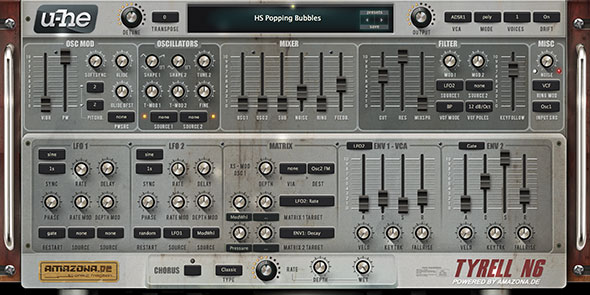
TyrellN6 is a compact synth that is based on concepts and ideas of a hardware synth: a few modules, novel features, analogue sound and low-cost.
As far as free synths go, it doesn’t get any better than this, and Tyrell N6 is right up there with Dexed and Surge if you ask me.
The interface has a very “Grungy” look to it and it’s quite intuitive to use, which isn’t that common with synthesizer VSTs since they tend to have even more knobs and faders all over the place.
At its core is a pair of oscillators, a noise generator and ring modulator, plus some ADSR envelopes, and a pair of LFO Modules with eight Waveforms.
Additionally, it comes with over 500 presets to get you started on the right track, and you can even download more of them on the U-He website.
Download it for free here.
VCV Rack 2 (Windows, Mac, Linux)

VCV Rack 2 is a freeware standalone open-source synth that models almost every Eurorack format module available, allowing you to create your own modular right as well as patches with virtual cables, like you would on the real modular synths.
The free version only works as standalone and you can’t really use it as a plugin in your DAW, for that you will need to purchase the pro version at $149.
It features 30+ built-in modules with all the tools you need to get started, 170+ official modules from Eurorack manufacturers, Polyphonic MIDI input/output for hardware control, and you can even host plugins inside Rack itself.
Download it for free here.
Top 3 Choices
If you don’t mind investing time into learning a complex but extremely good synth, then Absynth 5 is a great choice.
If you are completely new and want something that’s easy to learn and also affordable, then Synthmaster One might be the one.
Lastly, an overall great synth plugin is Serum.
And last but not least…
How can you learn to use a Synth the right way?
If you really want to learn as much as possible about synthesizers without wasting too much time, then I’d recommend enrolling in an online course like Beginner’s Guide to Synthesis.
This course covers all the basics and all the essential knowledge you need about synthesizers in order to produce modern music.
You’ll need a MIDI Controller

In order to be able to use these plugins properly, you will need some sort of MIDI Controller.
While you can use your mouse to map the MIDI in your DAW, it’s a lot faster and easier to do it with a keyboard/controller.
My recommendation here is for you to get something like the M-Audio Oxygen 25 MK IV MIDI Controller which you can find at Amazon at a very affordable price, plus it comes with some extra software like Pro Tools First.
Conclusion
No matter which of these synths you choose, they are all extremely good.
Some of them are extremely affordable while some other are quite pricy.
Which one you decide to go with entirely depends on your needs and budget.
I hope this information was useful…
Have a wonderful day!
F.A.Qs.
Virtual Studio Technology (VST) is an audio plug-in software interface that integrates software synthesizers and effects units into digital audio workstations.
